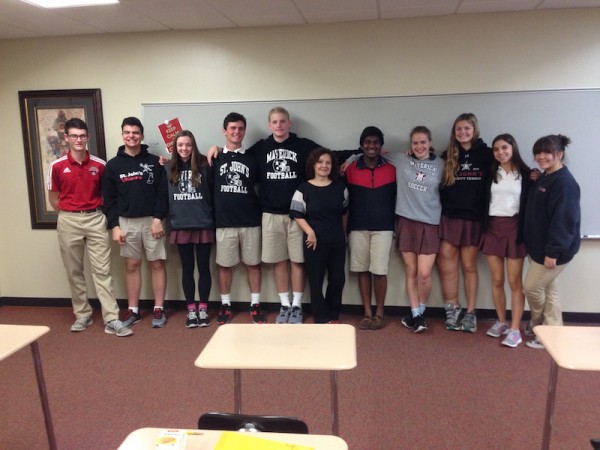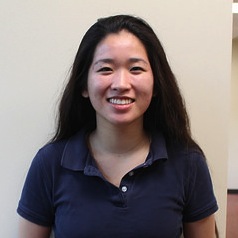New class teaches practical math, real-world applications

The Math in Contemporary Society class stands with Monica Rhor after her lecture.
January 13, 2016
Head of Math Department Martha Childress and math teacher Danielle Iseli have brought something entirely different from calculus or statistics to their curriculum. Their new class, Math in Contemporary Society (MCS), teaches students how to apply math to real life.
“In the class, we talked about CPI, which is consumer price index, FICO, and all of those acronyms whose meanings students should know but don’t know,” Childress said. “We held discussions on credit and credit cards because seniors are going to be hit with lots of credit card applications when they head off to college.”
In contrast to regular math class quizzes and tests, MCS’ assessments were open book.
“It was very different teaching this course,” Childress said. “The assessments weren’t about ‘Can you remember the math’. It focused more on ‘Can you use the math’.”
Because MCS has never been taught in prior years, its schedule was more adaptable than that of other courses.
“The curriculum was super flexible,” senior Suman Atluri said. “The class really liked certain things, like sports, for example. Teachers were able to tailor what they taught to our interests.”
The class usually discussed multiple topics in one period.
“We studied such a wide range of subjects,” Iseli said. “In one day, we could start out with fantasy football, go into the stock market and end with excel sheets on another topic.”
MCS students learned through a project-based course that focused on real-life scenarios.
“We did one project about the stock market, in which students learned what stock quotes mean and what affects the market,” Childress said. “They were given ten thousand dollars and ten weeks to purchase stocks fictitiously and monitor them every week.”
As MCS is a required course in some colleges, Childress thinks that MCS is most suitable for seniors.
“Seniors are about to head into adulthood, and there are many things they need to be aware of,” Childress said. “Universities are figuring out that kids are arriving, and they don’t have a clue about how to manage credit cards, mortgages or loans.”
Iseli also thinks that the content taught in MCS is important for students transitioning to adulthood.
“This is stuff that kids really needed to learn. I was kind of surprised about what the kids didn’t know, but I’m glad we were able to talk about them as well as the importance of financial decisions,” Iseli said. “Plus, in the dorkiest way possible, I hope students finally realize that math is actually everywhere.”
The class also helped spread awareness of Houston’s economic gap. During their final project, a case study called “The Working Poor,” students followed the life of a single parent who had two children and worked for minimum wage.
“They had to find appropriate housing, use food stamps, and budget their money for the entire year. Lastly, they had to figure out how this person, who was working full-time, was going to improve their and their children’s lives,” Childress said.
Childress and Iseli invited guest speaker Monica Rhor, a narrative writer and investigative reporter from the Houston Chronicle, to discuss the ties between the class’ project and her own experience as a journalist. At the time, Rhor was working on “The Divide,” a series of articles about economic inequality in Houston. She visited the class twice.
“I was excited to see the elements of my research get implemented, and I was happy that they actually resonated with my articles,” Rhor said. “One of the students said they didn’t realize how hard it was to get to work, which brings up the issue of transportation. When a person in poverty finds an apartment he or she can afford, it is usually far away from work. That sets off a domino effect.”
The project and Rhor’s research challenged stereotypes of those who work minimum wage.
“A couple of students realized that being in poverty is not a matter of laziness or willpower to get out of poverty,” Rhor said. “There also exists a lot of societal barriers that keep people from getting out of poverty.”
“The Working Poor” had a lasting impact on the class. After the course ended, many students wrote notes to the teachers about how the project changed their perspectives.
“The project really made them think differently about the people they encounter at fast food places, how they know that the pay doesn’t go very far and how these are people we encounter every day in our lives,” Childress said. “They gained empathy for people who may have made poor choices in their life previously and are experiencing the difficulty in improving from that.”




